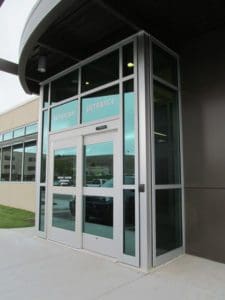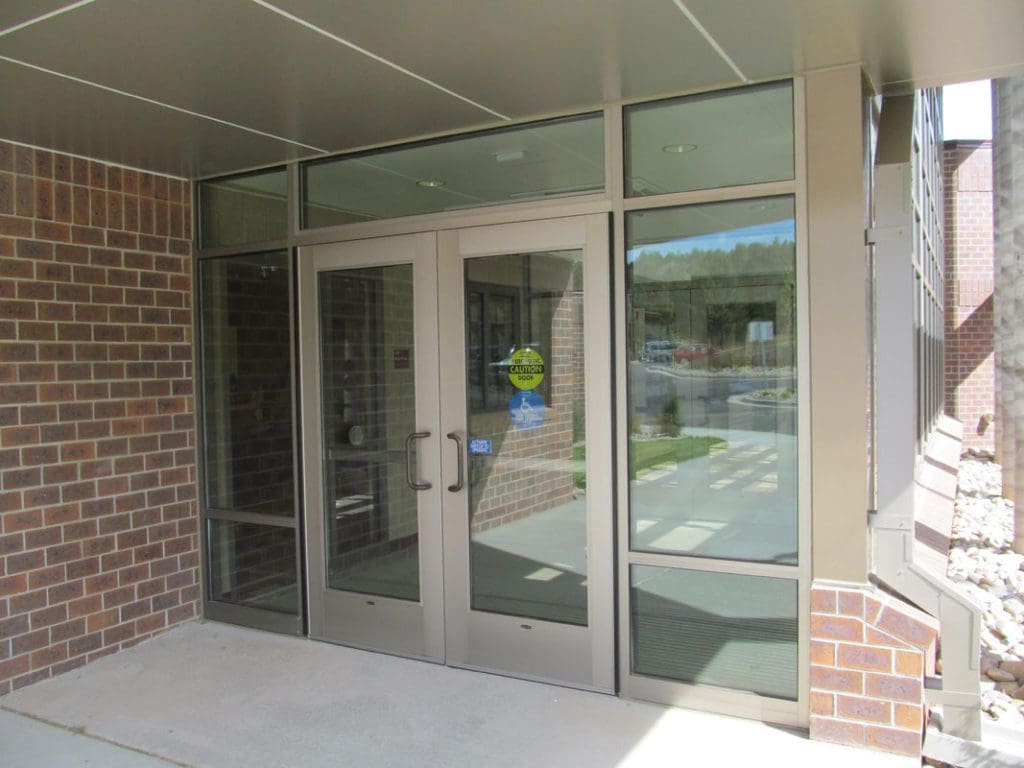Automatic Doors & Entrances
Commercial Automatic Doors & Entrances
Automatic doors and ADA-compliant storefront doors offer significant value to businesses by enhancing accessibility and convenience for their customers. Automatic doors, equipped with motion sensors, not only provide a welcoming and modern entrance but also facilitate effortless access for all customers, including those with mobility challenges. ADA-compliant doors, designed in accordance with the Americans with Disabilities Act, go a step further by ensuring that entryways are accessible to everyone, including individuals with disabilities. Implementing these features not only improves the overall customer experience but also helps businesses comply with legal requirements, by fostering a positive, inclusive image that can attract a wider customer base and enhance a business’s reputation.
Automatic Sliding Doors
Automatic sliding doors enhance the customer experience and improve operational efficiency. These doors offer a sleek and modern business entrance that not only adds aesthetic appeal but also accommodates high foot traffic efficiently. The hands-free operation ensures convenience and accessibility for all customers, making it an ideal choice for businesses that experience heavy foot traffic. Automatic sliding doors not only improve customer satisfaction but also create a more welcoming and contemporary image, ultimately boosting business growth and reputation.


ADA Compliant Doors
ADA-compliant commercial doors are a valuable asset for businesses, promoting inclusivity and ensuring legal compliance. These doors are designed in accordance with the Americans with Disabilities Act (ADA), which mandates accessibility standards. By implementing ADA-compliant doors, businesses demonstrate a commitment to equal access for all customers, including those with disabilities. Moreover, these doors enhance customer convenience and overall satisfaction, which can lead to increased patronage. They contribute to a positive business image, attracting a broader customer base, and foster a reputation for social responsibility and accessibility.
Automatic Swing Doors
Automatic swing doors operate similarly to traditional doors but open automatically. They can swing inward or outward and are commonly used in places where a more traditional door appearance is desired.
Automatic Revolving Doors
Automatic Revolving Doors consist of three or four doors that are attached to a central shaft and rotate around a vertical axis within a cylindrical enclosure. They are energy-efficient as they prevent drafts and maintain a constant indoor temperature. Revolving doors are often seen in large commercial buildings, hotels, and airports.
Automatic Folding Doors
Automatic Folding doors, also known as bi-fold or accordion doors, consist of multiple panels that fold in on themselves as the door opens. They are suitable for wide entrances and areas where sliding or swinging doors might not be practical.
Automatic Telescopic Doors
Automatic Telescopic doors have multiple panels that slide and stack neatly behind each other as the door opens. They are ideal for locations with limited space where a wide opening is required.
Hermetic Doors
Automatic Hermetic doors are airtight and designed for environments where maintaining specific conditions such as sterile or controlled atmospheres is critical, such as hospitals, laboratories, and cleanrooms.
Different Sensor Types & Access Controls for Automatic Doors
Automatic doors utilize various sensor types to detect the presence of individuals and control their opening and closing. The choice of sensor type depends on factors such as the specific application, the level of security required, and the preferences of the building owner or operator. Some common sensor types for automatic doors include:
Infrared Motion Sensors: These sensors detect motion using infrared technology and are activated when someone approaches the door.
Microwave Sensors: Microwave sensors emit continuous microwave signals and trigger the door to open when they detect changes in the signals caused by approaching individuals.
Ultrasonic Sensors: These sensors use high-frequency sound waves to detect the presence of people or objects near the door. When the sensor detects motion or a change in the reflected sound waves, it activates the door.
Pressure Mats: Pressure-sensitive mats are placed on the floor near the door. When someone steps on the mat, it triggers the door to open.
Photoelectric Sensors: These sensors use beams of light to detect the presence of individuals. When the light beam is interrupted by someone passing through, the door is activated.
Passive Infrared (PIR) Sensors: PIR sensors are similar to infrared motion sensors but are more focused on detecting heat signatures. They activate the door when they sense a change in heat patterns caused by a person’s presence.
Touchless Switches: These are contactless switches that rely on proximity sensors. Users wave their hand or approach the sensor, and it triggers the door to open.
Radar Sensors: Radar sensors use radio waves to detect motion and activate the door when someone approaches.
Keycard or RFID Readers: These sensors require authorized personnel to present a keycard or RFID badge to unlock the door, ensuring controlled access.
Push Buttons: Traditional push buttons or touchpad controls can also be used to open automatic doors manually.